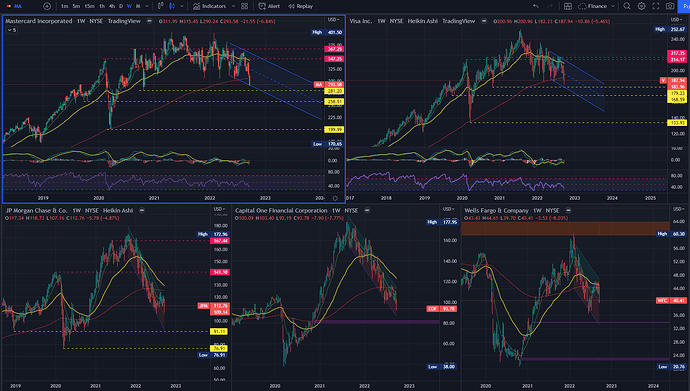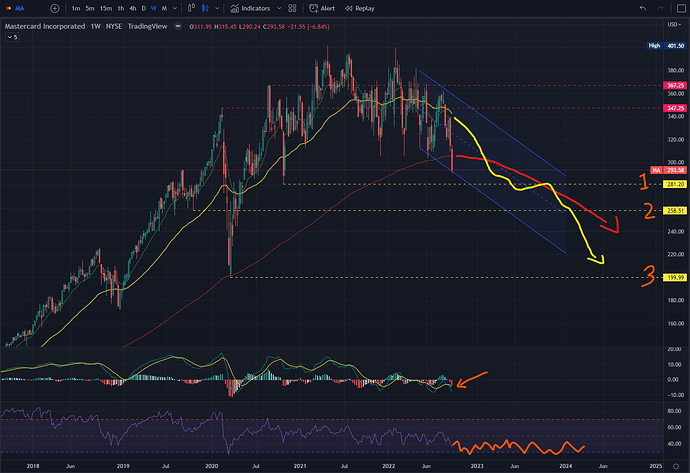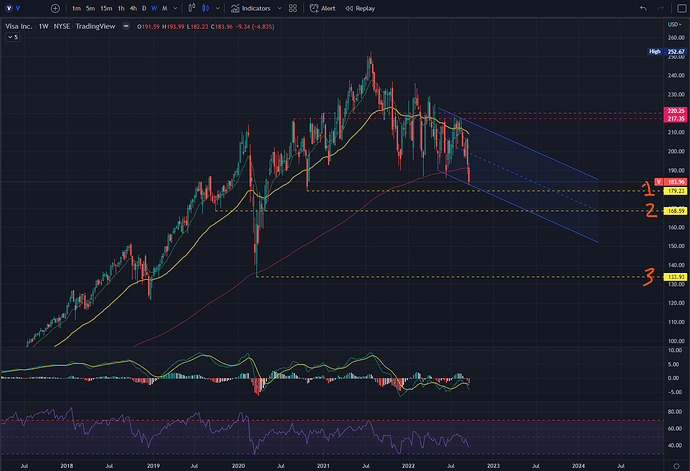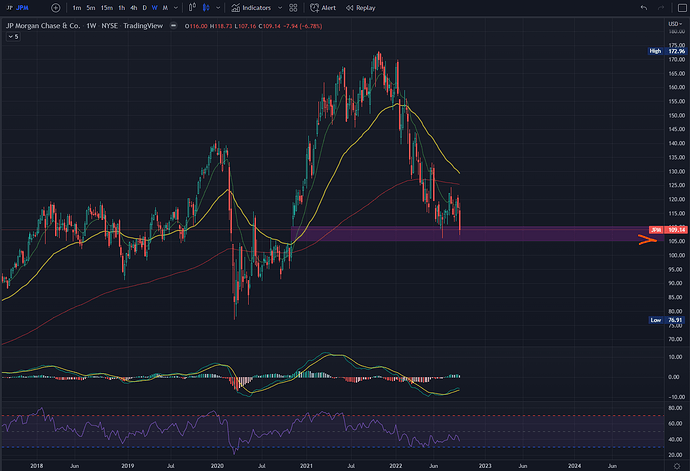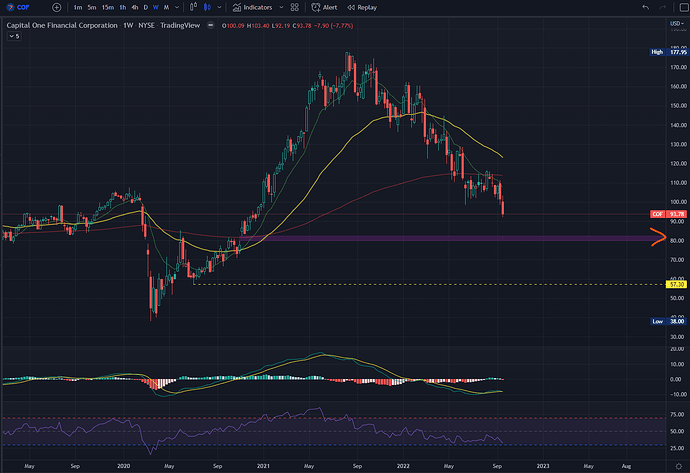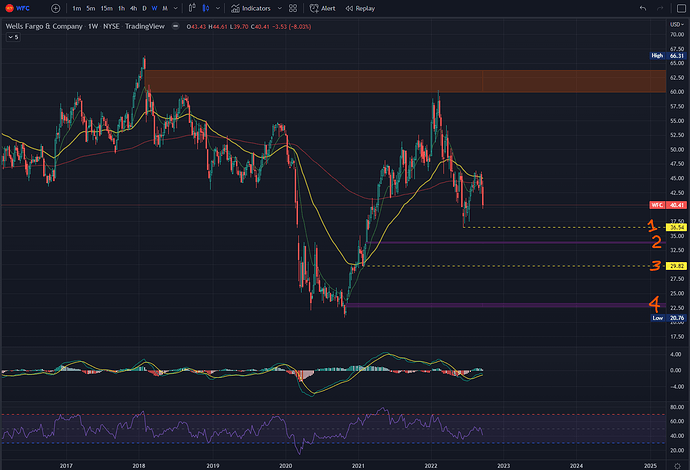My current take on the market – why I’m bullish in the short term (next two months) and cataclysmically bear in the long (everything beyond that)
I just want to levelset around my current perspective so everyone knows where I stand:
I believe that we are heading into a recession. I believe that this will trigger a massive market selloff, and I think we will experience a crash within the next 4-6 months. I think many of us will make great money off it. I also don’t believe that it will happen before the next 4 months, and when the wash of fear lets go, I believe we will have a slow jog rally for a few months before plummeting to a long cold death that will probably take 3-5 years to recover from.
It’s no secret that I have a full on chubby over this chart that Ni posted that I have been referring to as the HOPE aggregate. Effectively this is watching how the market responds to rate increases by looking at Housing, New Orders, Profits, and Employment. This is my Exhibit A, as I will be leaning heavily on this in my analysis in this post.
Exhibit A – The HOPE Aggregate
Another image I’ve posted before that I revisit often is slope of growth pre-COVID and pre-housing crash. I end up with a roughly drawn three-line channel that represents the median line between the dot-com bubble and the housing crash, the 11 years of standard growth between the housing crash and COVID and our current situation, and a third line marking the midpoint of the two that happens to correlate well with the excessive volatility of the early Trump years.
This is my rough exhibit B. While we’ve meme’d it, the general philosophy is that stocks always go up over time and we can see that in our market overview below. The economy is expanding, and in aggregate, even on bad months, we always trend up. We bucked the natural trend badly during the inflationary period; however I think naturally we want to be between these three lines. And yes, I recognize that this can put us as low as $310 and as high as $430 in January 2023.
Exhibit B – Stocks always go up
It’s important to note that these aren’t just lines on a chart. This is a representation of HOW our economy has grown over the past 20 years. And right now honestly I think we’re where we’d be if not for the meddling of the fed and that pesky disease and Russia.
With that in mind, I’m going to spend some time talking about the HOPE aggregate some more using everyone’s favorite not correct analogy – the 2008 market crash. I don’t want to talk about shapes or dollar values or anything of the sort, just pointing to some of the major indicators that preceded the crash and how they correlate to today.
My first point of interest is housing data in the form of the NAHB Housing Index. Specifically, I want to call out the point in which there was a stark reversal and how much time elapsed between the housing market starting to go down horribly and the market following suit – the markets grew by 15% heading into that recession AFTER the housing market started going down significantly. Now important note on this – the cause of the housing collapse in 2008 was not because of housing, but rather mortgages and it takes a long time to default on mortgages (make note of where my cursor is and the date highlighted)
Consumer confidence is next in the HOPE aggregate as an easy to conceptualize market metric. At this time in 2007 the consumers had a PRETTY good idea that shit was brewing but they weren’t sure when. At this point the Consumer Confidence index spiked up a bit, and then fell just slightly shortly before the markets crashed. However, again, there were three months in which the markets grew 13% before the market plummeted.
Finally, and really the last point I need to emphasize here, is Orders. Looking at new orders we can see that at this point the house index has fallen, confidence has fallen, but orders are still up. As soon as Orders plummet, the market goes with it.
Catastrophic drops in Orders immediately affects profits. Profits are by and large how the market is priced. Once we see orders drop, we know that we’ll be in a world of pain because profits will go, employment will follow. However, once it drops, we’re probably already too late to take immediate action on it.
I know I promised a Venn diagram but instead I’m going to give an image I threw together. I’ve been struggling with when we will transition from good news is bad, bad news is good. I believe I’ve done enough analysis to say that the cutline is between a plunge in consumer confidence and a plunge in new orders.

With that said, I don’t think it’s out of the question to maybe not “rally”, but slow jog until the end of the year. Until we start to see consumer confidence plummeting and it starting to affect new orders. While my colleague Phil is bearish in the immediate, I’m not ready to throw in the balloon towel just yet. My perspective is that we’re going to float back towards 4000 until the end of the year and around February or March we’ll see the crash.
At this time, I haven’t seen enough diminished confidence nor anything more than a plateau of orders to convince me otherwise and I think it would be presumptuous to assume that the markets are ready to do the same. However I do think it’s coming soon. 4 months goes fast.



